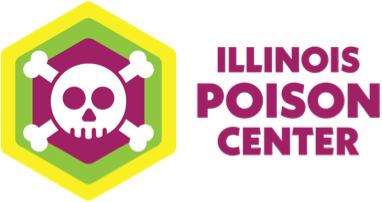Compact Fluorescent Light Bulbs
Compact fluorescent light bulbs (CFLs) are likely somewhere in your home. These common bulbs can save money on your energy bill, but they contain a small amount of mercury. If ingested or inhaled, mercury can be hazardous to your health. See IPC tips below for safe handling and disposal.
What is a compact fluorescent light bulb?
A CFL is an energy-saving light bulb that fits into a standard light socket. A CFL lasts up to 10 times longer and uses less energy than regular light bulbs.
What is mercury?
Mercury is a naturally occurring metal that exists as a liquid, solid and gas. It can be highly toxic if inhaled or ingested. Mercury can be found in:
- Thermometers with a silver liquid — those with red or blue liquid do not contain mercury
- Fluorescent light bulbs
- Thermostats and barometers
- Manual blood-pressure devices
- Some gas meters, mostly those installed before 1961
A CFL bulb has 5 milligrams of mercury, which is less than 0.0002 ounces. For comparison, a mercury thermometer contains about 100 times more mercury than a CFL. The mercury in a CFL can be an invisible vapor or a bead the size of the period at the end of this sentence. If CFLs are intact and used properly, the mercury is not released.
Signs of mercury poisoning
Inhaling mercury vapors is the main cause of mercury poisoning, as the mercury is absorbed by the lungs. Mercury poisoning can cause:
- Nausea
- Vomiting
- Diarrhea
- Weakness
- Headache
- Increased blood pressure
- Skin rashes
- Metallic taste
- Difficulty breathing
Simply being nearby when a CFL bulb breaks is not expected to cause any problems or symptoms. The risk of exposure to mercury from the occasional broken CFL bulb is very small. Using CFLs greatly reduces the amount of mercury in the air by reducing the amount of electricity that power companies need to light a standard bulb.
How should I clean up a broken CFL?
- Open a window, leave the room and restrict access to the room for at least 15 minutes
- Remove all broken pieces and materials you can. Do not use a vacuum cleaner.
- Do not use your bare hands to pick up pieces and materials. Wear disposable rubber gloves, if available.
- Carefully scoop up the fragments and powder with stiff paper or cardboard.
- Wipe the area clean with a damp paper towel or disposable wet wipe.
- Use sticky tape, such as duct tape, to pick up small pieces and powder.
- Place all pieces and materials in two plastic bags and seal it. Wash your hands after disposing of the bag.
The first time you vacuum the area where the bulb broke, remove the vacuum bag after cleaning the area or empty and wipe the canister. Put the bag and/or vacuum debris, as well as the cleaning materials, in two sealed plastic bags in the outdoor trash or protected outdoor location for normal disposal.
How should I dispose of a CFL?
Do not put CFLs in your household trash since they contain mercury. CFLs should be sealed in a plastic bag and taken to a recycling site near you. To find a recycling center near you that accepts CFLs, visit www.earth911.org.
Resources
- Environmental Protection Agency: CFLs and mercury
- Recycling Information
- Earth911: CFL and mercury information and 1-800-CLEANUP recycling locator helpline
IPC is here to help. If you have questions, call IPC at 1-800-222-1222. Calls to our helpline are free and confidential. Toxicology experts are available to answer your questions 24 hours a day, seven days a week.
